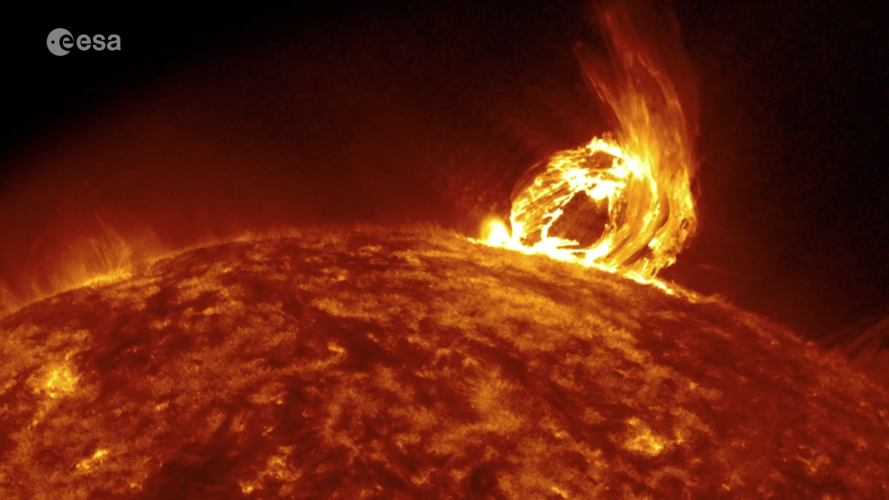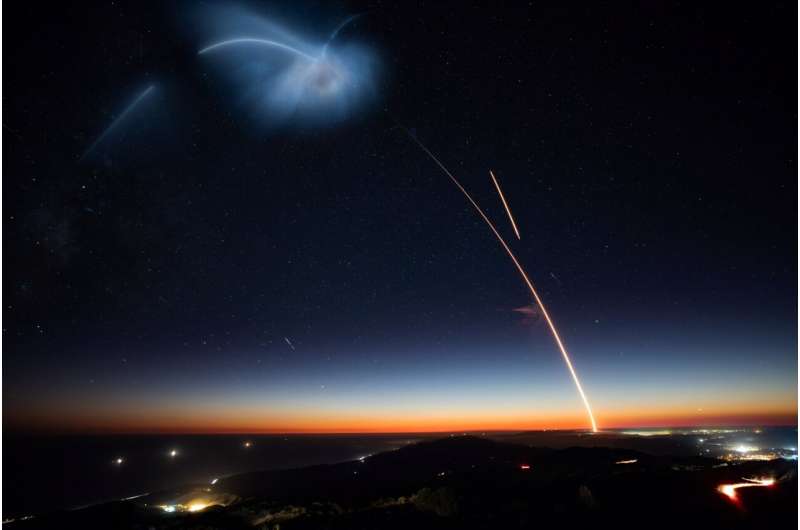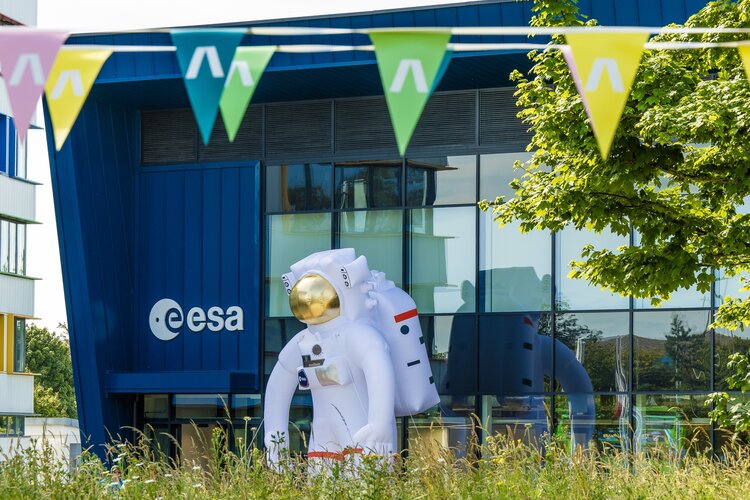Chinese satellite manufacturer MinoSpace raises $137 million
Wednesday, 03 July 2024 12:45

Increasingly feasible, on-orbit servicing has a challenging road to market
Wednesday, 03 July 2024 12:00

Proba-3’s new view on space weather
Wednesday, 03 July 2024 09:30 Video:
00:02:05
Video:
00:02:05
Space weather can affect satellites in orbit, trigger geomagnetic storms on Earth and interfere with ground infrastructure. We need to understand it better, and the best way to do that is look at where it comes from.
The Sun’s corona, its upper atmospheric layer, gives rise to the solar wind and is where coronal mass ejections are spawned: massive outward explosions of charged plasma. ESA’s Proba-3 double-satellite mission will use formation flying to open up sustained coronal views. Mimicking a total solar eclipse, one satellite will block out the fiery face of the Sun by casting a shadow onto the other.
SpaceX retools problem booster for overnight launch from Space Coast
Wednesday, 03 July 2024 09:24
SpaceX is rolling a booster that was part of a scrubbed launch attempt last month back to the launch pad for an early morning mission on the Space Coast.
A Falcon 9 rocket on the Starliner 8-9 mission carrying 20 Starlink satellites including 13 with direct-to-cell capabilities aims for liftoff from Cape Canaveral Space Force Station's Space Launch Complex 40 at 2:57 a.m. Eastern time Wednesday during a window that lasts until 5:59 a.m.
Space Launch Delta 45's weather squadron forecasts an 80% chance for good conditions. Additional opportunities fall to Sunday, July 7, during a window that opens at 12:28 a.m.
This is the 16th flight of the first-stage booster, which was previously on the pad for the Starlink 10-3 mission, but was changed out after an issue when it hit T-0 during a launch attempt on June 14.
The flight eventually took off with a new booster while SpaceX reconfigured this for Wednesday morning's attempt. SpaceX never revealed the reason behind the scrub or the booster switch.
It will attempt a landing downrange on the droneship A Shortfall of Gravitas stationed in the Atlantic.
Stellar success for ESA's first open day in the UK
Wednesday, 03 July 2024 08:53
Thousands of visitors flocked to ESA’s establishment in the UK last Saturday to experience first-hand how the agency is pushing the boundaries of exploration and using space to improve life on Earth.
A snaking scar on Mars
Wednesday, 03 July 2024 08:00
A fascinating feature takes centre stage in this new image from ESA’s Mars Express: a dark, uneven scar slicing through marbled ground at the foot of a giant volcano.
SpaceX wins NASA contract to launch gamma-ray astronomy mission
Wednesday, 03 July 2024 04:44

NASA assessment suggests potential additional delays for Artemis 3 lunar lander
Wednesday, 03 July 2024 04:39

Europe's Ariane 6 rocket finally ready for liftoff
Tuesday, 02 July 2024 22:02 Europe's new Ariane 6 rocket is set for its first-ever launch next week, carrying with it the continent's hopes of regaining independent access to space and fending off soaring competition from Elon Musk's SpaceX.
After four years of delays, the European Space Agency's (ESA) most powerful rocket yet is finally due to blast off from Europe's spaceport in Kourou, French Guiana, at 3:00 pm (180
Europe's new Ariane 6 rocket is set for its first-ever launch next week, carrying with it the continent's hopes of regaining independent access to space and fending off soaring competition from Elon Musk's SpaceX.
After four years of delays, the European Space Agency's (ESA) most powerful rocket yet is finally due to blast off from Europe's spaceport in Kourou, French Guiana, at 3:00 pm (180 Japan succesfully launches H3 next-gen rocket with new observation satellite
Tuesday, 02 July 2024 22:02 In its third attempt in more than a year, the Japan Aerospace Exploration Agency successfully launched Monday its new H3 rocket carrying with it this time an observation satellite intended to monitor damage on Earth from natural disasters.
"Today, the payload, Daichi-4, was deployed into its operational environment - space - and has commenced its mission," Hiroshi Yamakawa, JAXA's pre
In its third attempt in more than a year, the Japan Aerospace Exploration Agency successfully launched Monday its new H3 rocket carrying with it this time an observation satellite intended to monitor damage on Earth from natural disasters.
"Today, the payload, Daichi-4, was deployed into its operational environment - space - and has commenced its mission," Hiroshi Yamakawa, JAXA's pre Ahead of Ariane 6 launch, what are the other big rockets?
Tuesday, 02 July 2024 22:02 Europe's new Ariane 6 rocket is due to blast off for the first time next week, but it will launch into a quickly changing market for heavy space launchers increasingly dominated by SpaceX.
Here are some of the other big rockets competing for the lucrative job of hauling satellites and other missions into space.
- Ariane 6 -
The first flight of the European Space Agency's biggest roc
Europe's new Ariane 6 rocket is due to blast off for the first time next week, but it will launch into a quickly changing market for heavy space launchers increasingly dominated by SpaceX.
Here are some of the other big rockets competing for the lucrative job of hauling satellites and other missions into space.
- Ariane 6 -
The first flight of the European Space Agency's biggest roc SpaceX launches U.S. spy satellites from Vandenberg
Tuesday, 02 July 2024 22:02 SpaceX launched spy satellites for the United States from Vandenberg Space Force Base on Friday night.
The Falcon 9 rocket lifted off from Space Launch Complex 4 East at the opening of a two-hour window, 8:14 p.m. PDT.
The United States' National Reconnaissance Office described the classified mission as "the second launch of NRO's proliferated architecture, delivering critical sp
SpaceX launched spy satellites for the United States from Vandenberg Space Force Base on Friday night.
The Falcon 9 rocket lifted off from Space Launch Complex 4 East at the opening of a two-hour window, 8:14 p.m. PDT.
The United States' National Reconnaissance Office described the classified mission as "the second launch of NRO's proliferated architecture, delivering critical sp 




